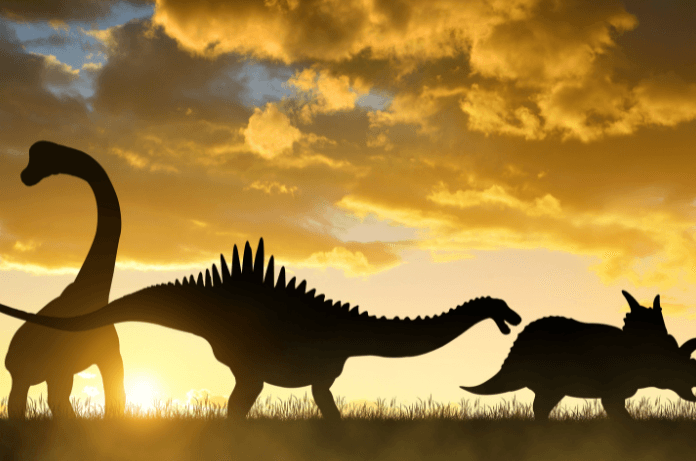At Dewars Farm Quarry in Oxfordshire, researchers have uncovered a site that offers a chance to walk where dinosaurs once walked. British researchers from Oxfordshire and Birmingham Universities have discovered the largest dinosaur footprint site in the United Kingdom. The footprints, consisting of approximately 200, must have been nearly 166 million years old. This extraordinary discovery offers a rare glimpse into the distant past.
The discovery was fortunate. While operating a mechanical digger to strip back clay, a worker named Gary Johnson noticed some unusual formations. Those “unusual bumps” turned out to be something far more significant—tracks left by dinosaurs millions of years ago. The site is remarkable, not just for its size but also for the insights it offers into the lives of these prehistoric creatures.
A Vast Landscape of Tracks
The site contains five extensive trackways, with the longest continuous track stretching approximately 500 feet. This makes it one of the largest dinosaur track sites in the world. Professor Kirsty Edgar, a micropaleontologist from the University of Birmingham, was part of the excavation team and was struck by the scale of the tracks. “This is one of the most impressive track sites I’ve ever seen, in terms of scale, in terms of the size of the tracks,” she told BBC News. The site allows researchers to study the movements of these massive creatures, providing a tangible link to a time when dinosaurs roamed the Earth freely.
The vast size and scale of the site offer paleontologists a rare chance to study how dinosaurs behaved in their natural habitat. Discovering such a well-preserved and extensive collection of footprints is uncommon, making this site a key focus for ongoing research on the Jurassic period.
Footprints of Giants
The trackways show footprints from several dinosaur species. Four of them were made by a cetiosaurus, a long-necked plant-eating dinosaur. Known for its huge size, the cetiosaurus left massive footprints in the mud as it walked through the area. The fifth trackway tells a different story, showing prints from a nine-meter-long meat-eating megalosaurus. This predator’s three-toed footprints, complete with claw marks, give clues about its hunting habits and movements.
Finding tracks of both herbivorous and carnivorous dinosaurs in the same place shows that a variety of species lived there millions of years ago. It makes scientists wonder how these dinosaurs lived together and interacted, giving them important information to study.
Advanced Technology for Ancient Tracks
To document the discovery, researchers used aerial drone photography, capturing nearly 20,000 photographs of the footprints. Scientists are now using these images to create detailed 3D models of the site, enabling them to study the tracks in intricate detail. These models will likely reveal more about the dinosaurs’ interactions, sizes, and speeds at which they moved across the terrain.
Modern technology plays a crucial role in paleontology today, enabling researchers to preserve and analyze fossilized tracks with unprecedented accuracy. The use of 3D models allows for virtual preservation, ensuring that these ancient footprints can be studied by scientists worldwide for years to come.
Professor Edgar remarked, “To my eyes, the size of the tracks is truly impressive“. Standing on the same ground as these ancient giants, she reflected on their movements and destinations, questions that have long fascinated paleontologists.
A Glimpse into the Jurassic World
The significance of this discovery extends beyond the footprints themselves. It offers a rare opportunity to understand the behavior of dinosaurs in their natural environment. Duncan Murdock from the Oxford Museum expressed the excitement shared by the research team. “Knowing that this one individual dinosaur walked across this surface and left exactly that print is so exhilarating,” he said. The site invites us to ponder the lives of these ancient creatures, imagining them navigating through the prehistoric landscape, each step leaving behind a mark that we can study today.
This discovery not only adds to our understanding of dinosaur behavior but also enriches the narrative of prehistoric life in what is now the United Kingdom. It underscores the dynamic and thriving ecosystems that existed long before humans.
A Monumental Find for Science
This site is more than just a collection of footprints; it is a scientific treasure that provides invaluable insights into the Jurassic period. Each track tells a story, helping scientists reconstruct ancient ecosystems and understand how these massive creatures lived, moved, and interacted. The sheer size of the site offers a rare chance to study dinosaur behavior on a scale that smaller sites cannot provide.
As the world awaits the airing of Digging for Britain, this discovery stands as a testament to the enduring fascination with dinosaurs and the mysteries of the past.

